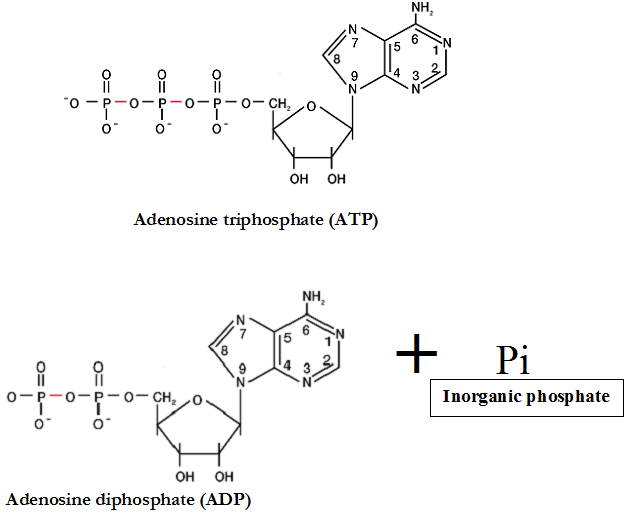Metabolic reactions help to maintain a state of balance or equilibrium in the cell. And the energy released during these processes is used by the cell for growth and other cellular activities. The growth of microorganisms requires the polymerization of building blocks (e.g. amino acids and nucleotides) into proteins, lipids, carbohydrates and nucleic acids.
These molecules are garnered to synthesize important cell components such as peptidoglycan/cell wall, microbial capsules, food vacuoles, cell membrane and other vital cell organelles.
Energy required for reproduction and for the overall development of the microbial cell is also provided for by metabolic reactions that go on in the cell. Metabolic reactions are usually divided into two main interconnected phases: anabolism (anabolic reaction) and catabolism (catabolic reaction).
ANABOLISM (ANABOLIC REACTION)
Anabolism is the processes by which energy and raw materials are used to build new macromolecules (e.g. nucleic acids and proteins) and other cellular structures during biosynthetic activities in the cell. It is an energy requiring-process that utilizes the free energy released by catabolic reactions in the cell. ATP is utilized in anabolic reactions.
In anabolic reactions, larger complex molecules such as proteins, carbohydrates and lipids amongst others are produced from simpler and smaller molecules such as amino acids, glucose molecules and fatty acids or glycerol respectively. The formation of nucleic acids (inclusive of DNA and RNA) from nucleotides is also a typical example of anabolic reaction.
CATABOLISM (CATABOLIC REACTION)
Catabolism is the cellular breakdown of complex organic molecules such as proteins into simpler and less-complex molecules (e.g. NH4+, CO2, O2, H2O, PO4– and SO4) utilized by the cell. It is an energy-releasing process; and it is the processes by which a living organism obtains its energy and raw materials from nutrient breakdown. ATP is produced during catabolic reactions. Catabolic reactions provide the energy that is required to drive anabolism in the cell.
The reactions that go on in the glycolytic pathway (Glycolysis), Krebs cycle and during fermentation are all typical examples of catabolism. These processes produce precursor molecules such as pyruvate (pyruvic acid) and acetyl CoA amongst others which are used to drive anabolic reactions. Nutrients are usually channeled via a variety of metabolic pathways where they are efficiently catalyzed by enzymes for usage by the cell.
AMPHIBOLISM
Amphibolism is another phase of metabolic reactions that occur in microbial cells. Amphibolism is simply defined as the combination of catabolism and anabolism. The term “amphibolism” is usually used to describe the metabolic pathway that participates in both anabolic and catabolic reactions. A typical example of an amphibolic pathway is the tricarboxylic acid (TCA) cycle or Kreb’s cycle in which many of the reaction within the pathway is reversible in nature, and has stages that operate anabolically and catabolically.
Though the TCA cycle catalyzes the breakdown of some complex biological molecules including carbohydrates, proteins or amino acids and fatty acids during catabolism or catabolic reactions, it can also function in anabolism because some of the products of the Krebs cycle also serve as synthetic precursors for the biosynthesis of other important biological molecules; and thus the TCA is a typical example of an amphibolic pathway because it can take part both in anabolism and catabolism.
Depending on the particular metabolic needs of a microbial cell at any point in time, a cell can decide which way to go in the citric acid cycle or TCA cycle which operates anabolically and catabolically. Amphibolic pathways refer generally to metabolic pathways that functions both catabolically and anabolically. It is noteworthy that during anabolism, microbial cells utilizes energy released during catabolism to synthesize complex biological molecules such as proteins from simpler molecules e.g. amino acids.
Based on their energy and nutritional requirements as well as an organism’s carbon sources, microorganisms may be classified as autotrophs and heterotrophs; phototrophs and chemotrophs; and as lithotrophs and organotrophs. Autotrophs utilize CO2 as their sole source of carbon while heterotrophs acquire their carbon from reduced, preformed organic molecules from other living organisms.
Phototrophs get their energy from the sunlight while chemotrophs acquire theirs from the oxidation of organic or inorganic compounds. Lithotrophic microorganisms obtain their energy from reduced inorganic compounds while organotrophic organisms obtain their energy from organic compounds.
References
Alberts B, Bray D, Lewis J, Raff M, Roberts K and Watson J.D (2002). The molecular Biology of the Cell. Fourth edition. New York, Garland, USA.
Berg JM, Tymoczko JL, Stryer L (2002). Biochemistry (5th ed.). New York, NY: W. H. Freeman.
Brooks G.F., Butel J.S and Morse S.A (2004). Medical Microbiology, 23rd edition. McGraw Hill Publishers. USA.
Campbell, Neil A.; Brad Williamson; Robin J. Heyden (2006). Biology: Exploring Life. Boston, Massachusetts: Pearson Prentice Hall.
Cooper G.M and Hausman R.E (2004). The cell: A Molecular Approach. Third edition. ASM Press.
Dale J (2003). Molecular genetics of bacteria. Jeremy W. Dale and Simon Park (4th eds.). John Wiley & Sons Ltd, West Sussex, UK. Pp.
Karp, Gerald (2009). Cell and Molecular Biology: Concepts and Experiments. John Wiley & Sons.
Lodish H, Berk A, Matsudaira P, Kaiser C.A, Kreiger M, Scott M.P, Zipursky S.L and Darnell J (2004). Molecular Cell Biology. Fifth edition. Scientific American Books, Freeman, New York, USA.
Madigan M.T., Martinko J.M., Dunlap P.V and Clark D.P (2009). Brock Biology of microorganisms. 12th edition. Pearson Benjamin Cummings Publishers. USA. Pp.795-796.
Maton, Anthea (1997). Cells Building Blocks of Life. New Jersey: Prentice Hall.
Discover more from Microbiology Class
Subscribe to get the latest posts sent to your email.





